|
Like many of us, one of the prayers I learned growing up was the prayer to St. Anthony – “St. Anthony, St. Anthony, please come around. Something is lost and must be found.” I put St. Anthony on the back shelf through my teenage years and into adulthood, but as I aged, I realized more and more that I need help and guidance to live a good and faithful life. One day, while I was traveling, I left an expensive set of headphones on a plane. I did not realize it until later in the day when I was checking my briefcase in preparation for a meeting. It would be days before I could return to the airport. I trusted those earphones into St. Anthony’s capable hands. Three days later, I arrived late to the airport, went to my gate, remembered my prayer to St. Anthony, had time to go to the lost and found, and there were my headphones. Since then, I have relied on St. Anthony numerous times to find my phone, keys, or that elusive book. I must confess, I am a bit shy sharing my emerging devotion to St. Anthony. It borders on superstition, no? Superstition is when I believe that what I do – say a prayer – causes St. Anthony to act. The saints contemplate God, praise him, and “constantly care for those whom they have left on earth.” (CCC 2683) Evoking St. Anthony does not change God. It changes me. The more I learn about St. Anthony (1195-1231), the more I want to know. He was born into wealth and privilege, joined the Augustinians at a young age and, at 19, was ordained and served as the guest master. That is how he met the Franciscans. He was drawn to their life of mission to the poor. He immersed himself in scripture and, just by happenstance, was discovered to be a remarkable preacher. Eventually, St. Francis (1181-1226) himself entrusted the formation of the Franciscans in theological studies to Anthony – balancing the rigors of the academy with the simplicity of the Franciscan life. After the general chapter in 1226, he was made Provincial Superior of northern Italy and settled in the city of Padua. In 1228 he served as the Franciscan envoy to Pope Gregory IX. His preaching was so amazing, he was commissioned to produce a collection of his homilies. There are many miracles attributed to St. Anthony. There are two that I find particularly compelling. Anthony had a book of psalms that was very important to him. He wrote notes in it to help him instruct his students. A novice, who decided to leave the order, took it. St. Anthony prayed for its return. Not only did the thief return the book, but he also returned to the community. The Eucharistic miracle attributed to St. Anthony occurred when he was challenged by a heretic about the real presence of Christ in the Eucharist. The heretic brought a hungry mule and showed him fresh fodder. St. Anthony brought a monstrance with the Blessed Sacrament. The mule ignored the fodder and bowed before the Blessed Sacrament. St. Anthony became ill with ergotism, a disease caused by a fungus found in rye and other cereals. He went to a woodland retreat to recover and died on his way back to Padua on June 13, 1231. More and more I am asking St. Anthony to “come around” to guide me in my own ministry within the church, my family life, and my daily life in these uncertain times. My prayer is that we will take the time to “come around” to St. Anthony and learn from this remarkable saint. He can guide us in rooting our lives in the scripture, cultivating a deep love for the Eucharist, and living a life spent in service to others. I will still ask St. Anthony to help me find my headphones – but I will also ask him to help me “hear” the word of God and act on it. **This photo is from: https://aleteia.org/2019/12/21/why-is-st-anthony-of-padua-depicted-holding-the-child-jesus**
0 Comments
Have you ever considered what it would have been like to be a member of the Church in the first few centuries? Jesus would have been fresh in peoples’ memories, but the rich Christian tradition we have today would have only just been taking shape. Those early followers of Christ would have been interpreting what Jesus’ teachings meant and figuring out how to live them out in their daily lives, both individually and communally. It was in this context that St. Justin Martyr, an early Christian convert and apologist who lived in modern day Israel from about 100-165 AD, lived. St. Justin is well known for his First Apology, which he wrote to the Roman emperor, Antoninus Titus, as a defense and explanation of Christianity. This text not only gives us insight to what it was like when the Church was taking shape, but it also provides a rich insight into how we can live as Christians to this day.
1) Being Christians in name and deed St. Justin knew as well as anyone today that it is much easier to say you are a Christian than it is to truly live as one. He wanted the emperor to truly understand what Christianity was and Who it was founded upon, to not base his opinions on the popular zeitgeist: “For from a name neither praise nor punishment could reasonably spring, unless something excellent or base in action be proved.” (Ch. IV) For us today, we live in a world where the name “Christian” can carry so many different connotations. It depends on each of us to “prove something excellent” in our actions. Besides claiming the name Christian, are we living and worshiping in a way that reflects this privileged name? 2) How to live as Christians Whether Christians in the first century or in the 21st century, we are called to live for God and His eternal kingdom above all else. With his eyes focused on Heaven, St. Justin was able to accept persecutions because he understood that his earthly life was temporary. He encouraged others to “imitate the excellences which reside in [God], temperance, and justice, and philanthropy.” (Ch. X) Rather than the material offerings sacrificed at the time, St. Justin wanted to make an offering of his life by setting aside his own will and taking up God’s ways. Rather than imitating the pagan gods, he wanted to become deified by “living near to God in holiness and virtue.” (Ch. XXIII) While our settings may be different today, we can still practice the patience, love, and charity towards others that St. Justin encouraged. 3) Christian Community Throughout the Apology, St. Justin is not just preaching about individual Christians, but the whole Christian community. From the beginning, the necessity of community was always understood. It was through one another that they would receive the faith, be converted, and persevere in the faith. Rather than worship alone, the early Christians understood the need to come together. The faithful would gather to offer prayers for one another to be “found good citizens and keepers of the commandments.” (Ch LXV) They would celebrate the Eucharist in remembrance of Christ’s passion and for their own nourishment. They would collect money to be distributed for the needs among them. Rather than seeing this early form of the Mass as a Sunday obligation, it was the fitting response to their new life in Christ. We too can embrace this view of community as the place we offer God fitting worship and truly practice our faith. While today most of us are blessed to not fear extreme persecution or martyrdom, we do still have the freedom and responsibility to make the choice for God and the good daily. Through the intercession of St. Justin, may we be strengthened to boldly profess and live out our faith. **This image is from: https://www.wordonfire.org/articles/contributors/st-justin-martyr-on-the-eucharist-and-the-ancient-mass/ Courage and perseverance are two traits that I admire. The latter is a characteristic that not many people have, is hard to teach, and one that is imperative for success. In my classroom of 2nd graders, I try to remind them to “not give up, but try again and again.” When they become frustrated with challenging work or difficult friendships, they stop wanting to try again. They start to give up - but I tell them, “Keep trying!” and “Don’t be afraid to make a mistake!” Hopefully, one day my students will grow to recognize how courage can help them persevere through anything.
People who do extraordinary things should be recognized for their courage and conviction. Saint Catherine of Siena, whose feast day we celebrated yesterday, is a woman whose contributions to the Church, taking action in times of need and exceptional theological writings, sometimes can be overlooked. Born in Siena, Italy in 1347, Catherine spent her life doing the will of God. She began receiving visions and praying to God from a very early age, even seeing in one in which Christ reassured her with an armor of courage that could overcome anything that tempted or threatened her. St. Catherine lived her entire life in prayer and was named a Doctor of the Church by Pope Paul VI on October 4, 1970. She along with St. Teresa of Avila and St. Therese of Lisieux are the three women to have been bestowed with such a title. St. Catherine worked to return Pope Gregory XI to Rome, from Avignon France where the Papacy had been residing for 67 years. Her determination to see this mission through was a testament to her unwavering courage to do God’s will. In her many philosophical letters, prayers, and the Dialogue, St. Catherine reflected on four theological concepts with which she considered while in ecclesiastical mysticism. The first was a Treatise of Divine Providence, the second was a Treatise of Discretion, third was a Treatise of Prayer, and finally a Treatise of Obedience. Throughout her courageous writings, she discusses the goodness of a person’s knowledge of God and his unending love for his children living on earth. Because of this prayerful life she led, in 1375, St. Catherine was blessed with the Stigmata on her hands, feet, and side. Her wounds reflected those of Christ’s and were only visible to the naked eye upon her death in 1380 at the young age of thirty-three. Found incorrupt in 1430, St. Catherine is now buried under the altar of Santa Maria Sopra Minerva, in Rome and a sculpture of her body is on display there, too. Throughout the year, let us strive to be like St. Catherine of Siena and take courage and persevere. Unshaken by those who challenged and doubted her, she remained steadfast in her commitment to Christ, His Church, and His people. You don’t have to be a saint to follow God’s call to courageous witness, but prayer and perseverance can lead you toward holiness in Christ. **This blog was originally published on April 30, 2015.** **This photo is from: https://ourcatholicradio.org/blog/5-things-you-can-learn-st-catherine-siena** As we continue through this “Year of St. Joseph” as proclaimed by Pope Francis in his Apostolic Letter Patris Corde, one cannot help but reflect on St. Joseph: adoptive father of Jesus, spouse to the Blessed Virgin Mary, and Patron of the Universal Church. These lofty and impressive titles have been given to a man who in many respects is seen as humble, consistently in the background, and having no words come from his mouth in Scripture. His example of what it means to be a man and a father is one men can strive for. As a father of a precocious one-year-old, I cannot help but look for examples of how to be a father. Of course, we often look to our own fathers, grandfathers, friends, and perhaps even godfathers and spiritual fathers through the priesthood. There are many qualities that we can emulate from these father figures in our lives, indeed very practical ones. How to change diapers without a mess; how to look good while carrying an undersized backpack filled with wipes, pacifiers, and a change of clothes; or at what posture to best steer that not-tall-enough stroller? What prayers should we be introducing to our young family? How can we strive to provide for our child both practically and spiritually? However, I would suggest another figure to look to: St. Joseph. When my son was baptized, a friend of ours – who happens to be named Joseph – gifted to him (and to us) a statue of St. Joseph. At the time, I considered it more of a funny coincidence, and a nice gesture. As I continued to reflect on it, I really began to see it as providential. Admittedly, as a new father, I was scared and anxious (I still am). St. Joseph undoubtedly faced many of the same anxieties. However, throughout Scripture he is portrayed as a man who sorts out problems and comes up with solutions in practical and brave ways. It is this particular quality that I think we, as fathers, should take as a noble example. There will be times throughout our fatherhoods when we will come to face challenges, confusion, and doubt. St. Joseph protected the Holy Family and trusted in the word of God when it was easy not to trust. As fathers we are called to protect our own families, not necessarily always from harm or danger, and also to provide an example of kindness, love, and humility that so often is characterized as weak. Instead, I invite you to seek St. Joseph’s noble example and see these qualities as a strength. We also need to trust in God. Pope Francis says in Patris Corde, “The greatness of Saint Joseph is that he was the spouse of Mary and the father of Jesus. In this way, he placed himself, in the words of Saint John Chrysostom, 'at the service of the entire plan of salvation.'” Let us as fathers follow in St. Joseph’s noble example to place ourselves at the service of God’s plan for us. Then we will truly be able to serve our families without fear or anxiety. For more on St. Joseph, read our blog post: “Ite Ad Joseph: 10 Quotes to Celebrate the Year of St. Joseph.” **This blog was originally published on April 15, 2021.** **This photo is from: https://cmmb.org/st-joseph-devotions-your-weekly-reflection-from-cmmb/**
Last year, I wrote a blog about my confirmation saint, Saint Felicity. I wrote how her life was inspirational towards my own life and how proud I was to have her as “my” saint. I really enjoyed the experience of learning more about “my” saint, and I thought it would only be fitting to continue on my self-discovery journey through the saints. This time, I set out to learn more about Saint Frances of Rome. When I was younger, I always disliked having to tell people my middle name. You see, my given name is Sarah Marie Frances (intentionally two middle names). I would always just tell people my middle name was Marie. In my naivety, I felt like Frances was a boy's name and just never found that it stuck; I swore to remove it once I turned eighteen. I knew that the name Frances was chosen for me after my Great Aunt, and I understood the sentimental reason as to why my parents chose my name, but it just didn’t feel “cool” to tell my peers that my middle name was Frances, so just Marie would have to suffice. As I’ve gotten older, I’m disappointed in my past self for believing this. I’m so honored to bear the name of my Aunty Frannie, as we called her. She passed away when I was around four, and I seldom have memories with her when she was alive, but I cherish the few that I did have. Since I was old enough to go on the internet, I would research various names and whether they had an impact on history (can you tell that I studied history in college?). I would search Sarah and read about her journey in the Old Testament, Marie is a diminutive of Mary, the Blessed Mother, and Frances is known as Saint Frances of Rome. Saint Frances of Rome was born in 1384 in the Papal States to a wealthy family. She was always interested in religious life, but was soon forced into an arranged marriage, yet she always yearned for a life of service and prayer. Together with her sister-in-law, Vannozza, she began to minister to the poor in Rome. After a few years, Frances lost her son and daughter to a plague that was sweeping across Italy. In an attempt to help the suffering, she donated all her money and possessions to those who were in need. Even after the plague had ceased, she continued her work for the poor and later founded a religious society for women with the goal to offer themselves to God and be of service to the poor. She continued her work for many years and, after the death of her husband, she moved into a home with the members of the society she created. Saint Frances really is an inspiration to us all! She serves as a reminder to help those who are in need, to prioritize our relationship with the Lord, and to persevere through the challenging moments in our lives. I am so honored to bear her name and I hope to use her story as a model for my own and to be more like her each and every day. To learn more about St. Frances of Rome, visit our feast day site. **This image is from https://www.franciscanmedia.org/saint-of-the-day/saint-frances-of-rome/**
2/8/2024 St. Anthony of Egypt and the Importance of Our Witness to Faith in a Secular WorldRead Now"The devil is afraid of us when we pray and make sacrifices. He is also afraid when we are humble and good. He is especially afraid when we love Jesus very much. He runs away when we make the Sign of the Cross." -St. Anthony of Egypt When St. Anthony of Egypt first ventured into the desert to become a hermit and devote his life entirely to God, he did not think that he would start the first monastic community–a tradition that would grow to be one of the life veins of the Church to this day. But St. Anthony inspired hundreds of men to follow him into the desert, living a life of simplicity and complete dependence on God. While at first this might seem ironic, that a man desiring to live alone would instead have hundreds of men following him and desiring to live in community with him, this story is seen time and time again throughout the lives of the saints. St. Anthony, St. Francis, St. Dominic, St. Clare, St. Teresa: each of these saints moved in a way that was completely contrary to the world when God called them to do so, and through their action inspired thousands of Christians to follow them and live lives of radical faith. We can often fall into the belief that our lives as ‘normal’ Catholics are not going to have an impact on the lives of others in any significant way, but as we see through the life of St. Anthony, every decision we make impacts and influences those around us. The men who followed St. Anthony into the desert did not do so because he was incredibly charismatic, or publicly performing great miracles, or telling them to follow him or they would go to hell. They followed because they saw that St. Anthony was joyfully living his life in a radically different way and they wanted to know what could possibly be going on so that their lives could be fulfilled like St. Anthony’s was. When we have a moment of conversion and the Lord calls us to be living saints, we are called in some way to radically change how we live our lives, no matter how big or small that change is. When we step into the change and choose to follow the Lord, we begin living as missionary disciples, our way of life witnessing to the reality which we live for. In the example of these saints, we see just how important it is that we live out these changes in a public way–that we live our lives in a way in which people can meet us and know that we are followers of Christ. Despite how small or big we may be in the mystical body, our unique charism matters and was created to help bring others into the fullness of the Christian life. When we look at the way we live our lives, what stands out as being unique to life as a missionary disciple? When we interact with a cashier at a store, do they experience an encounter with the Living God and the joy that comes with knowing Him? Are we willing to publicly live out our faith as an invitation for others to come and follow Christ, to have conversations with people about Jesus and invite them into the hope that we know? Do we stand for our morals and beliefs or do we allow others to conform our beliefs to this world? These are hard questions to ask ourselves, but we must take the time in prayer to reflect on whether the way we live brings others to follow the Christian faith, because others will follow our example. Thankfully as we see in the quote by St. Anthony at the beginning, the life of a Christian living for heaven doesn't have to be complicated, but is rather one of simple love for God and neighbor lived out through prayer, sacrifice, and faithfulness. Let us take the example of St. Anthony and live our lives in a simple, faithful way that shows those who encounter us that we are living for Christ, and that if they follow Christ they will find the same hope, peace, joy, and love that we witness to in the ways we live out our faith everyday. **This image is from: https://en.wikipedia.org/wiki/Saint_Anthony_Abbot_Tempted_by_a_Heap_of_Gold**
“When Jesus touches a young person’s heart, he or she becomes capable of truly great things.” – Pope Francis The quote above from Pope Francis’s introductory remarks to the pilgrims of World Youth Day 2016 in Krakow, Poland, spoke to over 2 million young adults traveling around the globe to worship together. Pope Francis’ words were heard by people already impacted by the message of Christ, many of whom, I would guess were informed of and formed by the love of God thanks to their Catholic educations. Today we celebrate in the United States the feast of St. John Neumann, Bishop of Philadelphia and founder of the first diocesan school system in the United States. Per the request of many families in his diocese, Bishop Neumann established a diocesan school system so that the children of the diocese could receive Catholic instruction and grow in their faith in a classroom setting. When the school system was established, the diocese of Philadelphia was strapped for resources, so Bishop Neumann invited many different religious communities to the fledgling schools to tend to the rapidly growing immigrant population in the city. His efforts both established the school system and increased the education of the city’s Catholic youth by more than twenty-fold. His diocesan system later served as the model for parochial Catholic education for much of the United States. St. John Neumann understood in the 19th Century - much like Pope Francis does now - that learning about the love of Christ through educational experiences can be an important part of our evangelical mission in this world. If we are all called to share in the evangelizing mission of the Gospel, then we must consider in what ways those gifts and talents can be utilized for that mission. For St. John Neumann, Catholic education provided the youth a designated place to come and learn about the Lord and how to live as a Catholic alongside of their other studies. For many youth, their formal catechesis ends with sacramental preparation. Families often don’t understand the importance of continual catechesis throughout a person’s life. So, what can we do to help the youth and young adults in our parishes and communities become more engaged in the faith outside of Catholic schools? How can we support education in non-traditional ways? The answer is particular to your individual situation and universal to the faith we all believe in. Pope Francis has some advice and good examples of experiences that I cannot better summarize myself: “Knowing your enthusiasm for mission, I repeat: mercy always has a youthful face! Because a merciful heart is motivated to move beyond its comfort zone. A merciful heart can go out and meet others; it is ready to embrace everyone. A merciful heart can be a place of refuge for those who are without a home or have lost their home; it can build a home and a family for those forced to emigrate; it knows the meaning of tenderness and compassion. A merciful heart can share its bread with the hungry and welcome refugees and migrants. To say the word ‘mercy’ along with you is to speak of opportunity, future, commitment, trust, openness, hospitality, compassion, and dreams.” Is your parish environment one of mercy? Does it foster openness and compassion? Is it willing to embrace people where they are with mercy and hospitality? Is your parish one that is moving outside of its parish borders and going to where it’s a bit uncomfortable and meeting people where they are both physically and spiritually? This is part of the continuing education that we as Catholics must undertake if we are to carry the mission of God to the world. We must constantly learn and relearn the message of Christ as espoused in the Gospels and find ways to practice it in our daily lives. We must learn to love and serve God and to love and serve our neighbor, not just from behind a desk, but in every step we take. **This blog was originally published on January 5, 2017.**
“Andrew, the brother of Simon Peter, was one of the two who heard John and followed Jesus. He first found his own brother Simon and told him, 'We have found the Messiah' (which is translated Anointed). Then he brought him to Jesus. Jesus looked at him and said, 'You are Simon the son of John; you will be called Cephas' (which is translated Peter).” - John 1:40-42 As we celebrate the Feast Day of St. Andrew the Apostle, I am always reminded of the hidden nature of St. Andrew’s ministry. As seen in the passage from the Gospel of St. John above, Andrew is one of the first two apostles called by Jesus. Yet, we see very little of the rest of St. Andrew’s specific ministry as an apostle outside of his crucial role in bringing St. Peter, his brother, to Christ. This action taken by St. Andrew – his ‘yes’ to Jesus’ mission – was crucial to the conversion of the rock of our Church, and requires greater reflection to see how just like St. Andrew, we are called to a hidden, simple, and apostolic life that leads to the raising up the next leaders of the Church. Like all things in the Christian life, St. Andrew’s life changed when he met Jesus and was called to follow Him. Earlier in the first chapter of John, St. Andrew leaves behind everything to follow Jesus, recognizing Him as the Way, the Truth and the Life. Similarly, we in living the Christian life have all experienced that moment when we heard Jesus calling us into relationship and adventure with Him, and responded enthusiastically to that call, leaving behind the ways of the world to follow Christ. After being called, we see that St. Andrew helped to bring other people to Christ – he didn’t want to keep the good news that he had found to himself. Not only did St. Andrew want to bring his brother Peter to Jesus, but he recognized that Peter had a mission in the Church as well, and he rejoiced in what God wanted to do with the life and talents of his brother. In stepping out in the apostolic life, the first step in evangelization is to go out and share the good news with those we encounter. However, the second, and I believe more important step, is to recognize gifts in others that can help to build up the kingdom, and calling those people to use their gifts for God’s will. This kind of evangelization is very hidden – no one knows the people who helped to build up the great saints of the Church – and yet this ministry is so crucial. Evangelizing and accompanying, as St. Andrew exemplifies, allows us to rejoice in God’s movement in the world, and allows others to fulfill the fullness of their personal vocation. Who in your life has been given gifts that can be used to build up the kingdom on earth? Take a step of boldness and guide them towards the Lord so that their gifts can be used for the greater glory of God. With the intercession of St. Andrew, let us pray that the Lord will give us the grace to live out the last line of the Litany of Humility fully: “That others may become holier than I, provided that I may become as holy as I should, Jesus grant me the grace to desire it.” St. Andrew, the hidden apostle, pray for us! **This image is from: https://www.wga.hu/html_m/r/roelas/sandrew2.html**
In my adult years, I have often turned to St. Teresa of Avila as a spiritual mother. I love her courage, her passion, her wit, and her boldness. Throughout her life, she was always on the go. She was a reformer who brought the Carmelite Order back to its original roots. She got things done, founding over fifteen monasteries. And yet she was a great mystic--a woman who received beautiful graces, revelations and experiences of God in profound ways that are hard to tangibly explain. She went into ecstasies as a result of her deep relationship with the Lord and wrote a book called The Interior Castle about the journey of faith leading to union with God. I love the synthesis of the practical and the mystical in her personality. This synthesis becomes more compelling in our lives today, for it reveals that we are capable of a deep interior life and relationship with God in the midst of the busyness of life. There is a story about Teresa of Avila that has caused me to laugh in genuine appreciation of her character. According to tradition, Teresa fell off her donkey while journeying to visit one of her convents--causing her to land in the mud and dirty her Carmelite habit. With her quick, fiery Spanish temper, Teresa looked up to heaven and said to God, “If this is how you treat your friends, no wonder you don’t have many.” I love this story because it beautifully depicts St. Teresa’s humanity and honest relationship with God. It is a raw, unfiltered moment of frankness that I believe is an example of both true prayer and transparency in our relationship with God. If prayer is ongoing dialogue with God through words, thoughts or actions, what is Teresa’s statement if not prayer? She talks to God with confidence and trust. She is bold about her feelings, knowing that God can handle her honesty. Notably, where does Teresa turn first in her day to day life? To God. He is her crutch, her foundation, even in times of frustration and annoyance. He is at the forefront of her mind. When I first heard this anecdote, I could completely relate to St. Teresa. Like her, I fall down on the road towards holiness. Furthermore, I often catch myself blaming God for different moments of hardship and frustration. What we sometimes miss as we lie there in the mud is the hand that’s in front of us--the extended hand of Christ that I often imagine in the story of the woman caught in adultery who Jesus saves from being stoned. God is not the one who pushes us down, but he is the one who picks us up. How quick are we to reach for the outstretched hand? Do we even reach out for it? Or are we too proud, choosing to try to get up by ourselves? What did St. Teresa do? In one of her reflections, she writes, “I praise the mercy of God, for it was he alone who gave me his hand.” (Life, Ch 7, The Collected Works of St. Teresa of Avila, Volume One, ICS Publications, Washington D.C. 1987) Do we turn immediately to God in our day to day lives? This is a question we can all reflect upon. Taking our reflection a step further, do we respond to the situations in which we find ourselves with joy or a sense of humor? I believe Pope Francis and St. Teresa would have been great friends. In his homily at the canonization Mass of Junipero Serra, Pope Francis reminded us of St. Paul’s command to “rejoice always.” If we forget this call, we fall into the temptation of becoming “sourpusses”--to use Pope Francis’ term. We are called to be people of joy in the midst of suffering, not in the absence of it. It is this type of transparency in our relationship with God, this type of outlook on the life of faith, this sense of humor that helps us move forward in answering the universal call to be missionary disciples who witness to the Gospel through their encounter with those around them. Like St. Teresa, may we always have a sense of humor. May we be bold and honest in our dialogue with God. May we be apostles of joy. And may we join in saying the phrase very often attributed to her, “God protect us from sour-faced saints”! **This blog was originally published on October 15, 2015.** **This image is from: https://www.holyart.co.uk/blog/religious-items/saint-teresa-of-avila-spanish-nun-and-mystic/**
I’m writing this blog while sitting on a patio at an AirBnB in Sedona, Arizona overlooking a beautiful landscape of red rocks and green trees. My sister is walking hand-in-hand in the grass with her 10-month-old daughter who just learned how to walk. The sun warms my skin, and the breeze cools my face after a challenging hike this morning. Being immersed by the great outdoors draws my mind to St. Francis of Assisi. I chose him (or some say that he chose me) to be my Confirmation Saint because of my love for peace and creation. The views of town from this house on a hill remind me of the small mountain town of Assisi. When I visited there, I could feel St. Francis’ presence as I was awestruck by the beauty around me and the peace within me. His tomb is one of the most peaceful places I have ever been. The energy of his presence is palpable in that room, and his legacy continues as people flock to where his bones eternally rest in peace. Energy is a popular term around Sedona since this area is believed to be a “vortex.” A vortex is a “swirling center of energy that can produce a range of physical, emotional, and spiritual effects.” (Sedona.net). According to VisitSedona.com, “Sedona has long been regarded as a place both sacred and powerful. It is a cathedral without walls. It is Stonehenge not yet assembled. People travel from across the globe to experience the mysterious cosmic forces that are said to emanate from the red rocks.” Energy is indeed a scientific reality; all creation gives off a certain energy. A woman has a feminine energy that complements a man’s masculine energy. Someone can either bring enthusiastic energy into a room or suck all the positive energy out of it. The Church embraces science and affirms scientific truth as God’s truth. St. Francis loved creation and had a deep spirituality. At the front door of a Sedona New Age shop, a St. Francis statue welcomes patrons. The New Age belief is that “there is no spiritual authority higher than personal experience.” St. Francis loved creation because he loved the One who created it all. He encountered God in all things, even though everything is not God. On one of the main vortexes surrounded by valleys and mountains rests The Chapel of the Holy Cross. It proclaims peace over all who enter. The larger-than-life crucifix is a reminder that Jesus is who we must seek in the heart of all creation. The Pontifical Councils for Culture and Interreligious Dialogue released a document in 2003 entitled “Jesus Christ the Bearer of the Water of Life: A Christian reflection on the New Age.” The following is a brief excerpt: "Gaia, Mother Earth, is offered as an alternative to God the Father… there is talk of God, but it is not a personal God; the God of which New Age speaks is neither personal nor transcendent… belief in cosmic powers and some obscure kind of destiny withdraws the possibility of a relationship to a personal God revealed in Christ. For Christians, the real cosmic Christ is the one who is present actively in the various members of his body, which is the Church." We all have different ways of praying and experiencing the power of God. If you have a spiritual encounter with nature, give thanks to the Holy Spirit for this beautiful connection to God’s creative energy. St. Francis loved being outside, but he did not make an idol of nature. We should not replace the Creator with creation. The Trinity invites us into a beautiful dance of love that is called “perichoresis.” In a humble attempt to create a metaphor, I could suggest that creation is the ballroom, dance floor, and the music that the Triune God created in order to help us dance with Him more beautifully. Creation brings us joy, peace, and refreshment, but it is not the ultimate source. We need to let God lead. Like an astonishing view on a mountaintop after an arduous hike, the Chapel of the Holy Cross radiates the message of mercy. Mercy is most beautifully defined as love touching misery. Though we suffer in this life, the love of God is always pursuing us. After the Feast of St. Francis, we celebrate the Feast of St. Faustina. She was an advocate for Divine Mercy and the Church has embraced her diary. She writes: “Creation is contained in the inmost depths of the Divine mercy more deeply than an infant in the mother's bosom.” (Diary 421, 1076) “Rejoice, all you creatures – she wrote – for you are dearer to God in His infinite mercy than a baby to his mother's heart.” (Diary 423) “Jesus, Eternal Light, enlighten my mind, strengthen my will, inflame my heart and be with me as You have promised, for without You I am nothing.” (Diary, 495) St. Faustina and St. Francis were both aware that without God they were nothing. Autumn reveals that beauty can come from “falling” or “dying.” As the leaves die and fall to the ground, they fill the sky with beautiful color before landing gently on the firm foundation. As this new season begins, I invite you to go on a walk outside and take Faustina or Francis with you. They are wonderful companions and would love to help you find the love, peace, energy, and mercy of Jesus Christ. Any nature that captures your attention is just a tiny glimpse of the masterpiece that God created in YOU! Here is a PDF of St. Francis’ Canticle of the Creatures: https://www.xavier.edu/jesuitresource/online-resources/documents/canticleofthecreatures-whitebackground.pdf Here is a sung version by Donna Cori Gibson: https://www.youtube.com/watch?v=9uxGrQ5cQpc
As we continue through this summer, it can feel like the heat and humidity exhaust us to the point where everyday feels the same. It seems to be a never ending cycle of heat, mosquitoes and thunderstorms and I find myself focused on the negative as I just float along. However, when I have a goal in mind, something that I am striving towards, the hot days suddenly become more bearable. I need that jolt of fresh air to keep me going. Just like our physical lives, our spiritual lives in the summer can go through some exhaustion as well. For those who have not explored our Saint Website yet, we hope it can be a spark for you this August. For those of you who already look at our saints of the day, we have added five new saints this month that can hopefully be insightful and helpful for your prayer and reflection time throughout the month. Bl. Frédéric Janssoone Tomorrow we will celebrate the life of 19th century Franciscan Bl. Frédéric Janssoone. Although he lived and worked at the end of the 1800s, his life can still be a model for so many of us today. He was a missionary in Canada and was not only known for his missionary work, but also for his handling of the administrative tasks of the growing missionary efforts of the Franciscans there. Today, it is easy to compartmentalize ourselves as being good at one thing at a time, for example, either excelling at missionary work or administrative work. The life of Bl. Frédéric, however, shows us that with the guidance of the Holy Spirit we can combine both missionary and administrative work into a life of holiness. He is a wonderful example of how we can allow the Lord to work in our lives in many different ways. Bl. Frédéric Janssoone, Pray for Us St. Mary MacKillop On August 8th, we will celebrate the feast of St. Mary MacKillop. I found it interesting that St. Mary MacKillop lived at almost the exact same time as Bl. Frédéric Janssoone. Here are two people, from different walks of lives, in different parts of the world who both found their way to Sainthood. It gives us reason to believe that there are saints all throughout the world in our time. I also think that St. Mary MacKillop was inspirational because she was the first person to be canonized from Australia. It is always hard to be the first person for anything. Most people do not like to be put out of their comfort zone, much less to be the first person canonized as a saint in a specific country. Whether it be our career, our socioeconomic situation, or any other hardship we may face in our life, we can always look to St. Mary MacKillop as a role model for living a saintly life under challenging circumstances. St. Mary MacKillop, Pray for Us St. Alberto Hurtado In the middle of the month, we will celebrate St. Alberto Hurtado. He was a 19th century Chilean Jesuit. After joining the Jesuits, he noticed two main problems that would become the basis for his ministry. First, many Catholics in the country had very little interaction with a priest. Second, many of the poor, including children, did not have housing. St. Alberto Hurtado devoted his life to helping the people of Chile overcome these two problems and I encourage you to read more about his work! I am particularly inspired by the ability of St. Alberto Hurtado to notice the societal issues at the time and fix them with haste.. He did not wait for someone else to do it; he saw the need and he addressed it right away. In our lives, may we strive to be as receptive and adaptive as St. Alberto Hurtado and help those around us without hesitation. St. Alberto Hurtado, Pray for Us St. Joseph Calasanz The feast of St. Joseph Calasanz will be celebrated on August 25th. He lived and worked at the end of the 16th century and beginning of the 17th century in Italy. St. Joseph noticed that children from poor families were not able to receive an adequate education which would put them at a disadvantage later in life. This lack of education perpetuated the cycle of poverty among poor families and greatly reduced the educational success of their children. St. Joseph founded some of the first free schools in Rome which greatly helped these marginalized children in their attempt to escape this cycle. Let us learn, from the example of St. Joseph Calasanz, of the power that education has to lift people up and benefit everyone in society. St. Joseph Calasanz, Pray for Us St. Joseph of Arimathea The story of St. Joseph of Arimathea is one that most of us are familiar with from the Gospels. We will celebrate his feast on August 31st to close out the month. St. Joseph of Arimathea was a follower of Jesus who helped take Him down from the Cross and give Him a proper burial after his crucifixion. After he saw eleven of the twelve Apostles abandon Jesus during his Passion and the brutal death Jesus suffered, St. Joseph remained resolute in his faith and helped to care for Jesus during his death. Let us pray for the intercession of St. Joseph of Arimathea and ask that even in the most trying of times, we may, like him, stay committed to Christ and to the care of others. St. Joseph of Arimathea, Pray for Us To learn more about the saints, visit our Catholic Feast Days Website by clicking here.
When you ask someone which of Pope Francis’ writings they think of first, you’re likely to hear Evangelii Gaudium, maybe Christus Vivit if you’re talking to someone in youth or young adult ministry, Laudato Si if the person is particularly environmentally conscious, or Amoris Laetitia for those who work in family ministry. The two that, by my estimation, might be least likely to be mentioned are Lumen Fidei (which was Pope Francis’ first papal document and was written by both he and Pope Emeritus Benedict XVI) and his Apostolic Exhortation Gaudete et Exsultate. This is a real tragedy because Gaudete et Exsultate might be one of the most important writings in Pope Francis’ pontificate, though I know that since I’ve said this, he’ll write something even better. Recently, the Church has celebrated the Solemnity of All Saints and the Commemoration of All Souls. On All Souls Day, the Church prays for all of the faithful departed, for the souls in Purgatory who will, one day, be welcomed into the Eternal Banquet. The Solemnity of All Saints celebrates all of the Saints in Heaven, both those great saints who are venerated in churches across the world, and those “saints next door”. In Gaudete et Exsultate, Pope Francis writes, “very often it is a holiness found in our next-door neighbours, those who, living in our midst, reflect God’s presence… Let us be spurred on by the signs of holiness that the Lord shows us through the humblest members of that people which ‘shares also in Christ’s prophetic office, spreading abroad a living witness to him, especially by means of a life of faith and charity’.” He reminds us that holiness is not just for those who are called to do great things, but by all of those who live a life of faith and who are followers of Jesus. We often see prominent Catholics telling us to “do great things”. They get this from Pope St. John Paul II who said to young people at World Youth Day in 2000, “It is Jesus who stirs in you the desire to do something great with your lives, the will to follow an ideal, the refusal to allow yourselves to be grounded down by mediocrity, the courage to commit yourselves humbly and patiently to improving yourselves and society, making the world more human and more fraternal.” And the great Saint has a point: when the world leads us to such mediocrity, a mediocrity which leads us to individualism, relativism, and complacency, the Lord Jesus leads us to greatness. What I think can be lost in translation, at times, is that this greatness is not worldly greatness. This greatness which Pope St. John Paul II spoke of is the greatness that a life of faithful missionary discipleship can bring. Greatness that is marked by hope, by a rich and abounding charity towards our neighbor, by a gentleness that comes from resting in eternal truth, and by a trajectory that always moves, as Bl. Pier Giorgio Frassati would say, “verso l’alto”, or “to the heights.” In Gaudete et Exsultate, Pope Francis leads the People of God on this journey to greatness which, when properly viewed, is indeed the journey to holiness. He reminds us that the Scriptures give us regular calls to holiness, a theology which was explored and articulated more deeply and precisely at the Second Vatican Council. He reminds us that, “This holiness to which the Lord calls you will grow through small gestures,” in a way echoing the words of St. Teresa of Calcutta who said, “not all of us can do great things, but we can do small things with great love.” Maybe this is the greatness which Pope St. John Paul II was speaking about to those young people over two decades ago. Not greatness which is pursued for any individual person’s gain, but great love. Love which seeks to echo the love of Jesus Christ on the Cross, love that wills the good of the other. This love is articulated in the Beatitudes, which Pope Francis calls “the Christian’s identity card.” Pope Francis gives us a deep and insightful document in Gaudete et Exsultate. He gives us cause to reflect on our lives and on the holiness which the Lord calls us to. He reminds us that we can’t do the Christian life alone and that our living of that life will make us counter cultural. We should find great cause for hope in Gaudete et Exsultate. In the words of Pope Francis, may we, “ask the Holy Spirit to pour out upon us a fervent longing to be saints for God’s greater glory, and let us encourage one another in this effort. In this way, we will share a happiness that the world will not be able to take from us.” For more resources on Pope Francis, click here for our Pope Francis Portal. For more resources on Gaudete et Exsultate, click here for our resource page.
This November, many of the saints we celebrate have left a lasting impact in the Church. Three of the saints this month were known as “the Great”, all for unique reasons. We also will get to celebrate four lay women saints whose lives can still inspire us today. In addition, two days before Thanksgiving this year, on November 23rd, we will celebrate three feasts of men who all lived very different lives, but all devoted their faith to the faith. “The Greats” The first feast of “the Greats” in November is St. Leo the Great on November 10th. St. Leo the Great was a pope in the 5th century who is known as “the great” for saving Rome from invasion and thus saving the Church community in Rome. He is also known for his writings, which led to him being named a Doctor of the Church. On November 15th, we will celebrate the feast of St. Albert the Great: a 13th century Dominican known for both writing on the works of Aristotle and being the teacher to St. Thomas Aquinas. He is known as “the great” today for many of his intellectual contributions to the Church, which has also led to him being known as the patron saint of scientists and philosophers. The day after St. Albert the Great, we celebrate St. Gertrude the Great. She was as a mystic and was given the title of “the great” because of her deep theological and spiritual insights. While all these “greats” lived quite different lives, they became recognized as greats for their deep commitment to their faith throughout all aspects of their life. Lay Women On November 16th, we will celebrate St. Margaret of Scotland. When she was Queen of Scotland in the 11th century, she was known for her piety and using her position as queen for charitable works for all of the people of Scotland. She’s a great example to us of staying focused on our faith and charitable actions even through stressful times. I find it fitting that we will celebrate St. Elizabeth of Hungary the day after St. Margaret of Scotland. Even though St. Elizabeth of Hungary, a princess in the 13th century, only lived until 24, she used her wealth to establish a hospital and care for sick patients. Even though she didn’t live a long time, she is known as the patron saint of hospitals and nurses today. On November 22nd, we will celebrate St. Cecilia. St. Cecilia was martyred in the early Church and because of her musical passion, she is known as the patron saint of musicians today. Then, on November 25th we will celebrate St. Catherine of Alexandria, a saint from the early Church who converted to Christianity and then used the rest of her life to challenge pagan philosophers and engage with the intellectual components of the faith. All four of these lay women have greatly impacted the Church and continue to inspire us today. November 23rd On November 23rd, we will celebrate three feasts, a rare day where we have three separate feasts to celebrate. The first one chronologically is Pope St. Clement I, a pope at the end of the first century. Even after being exiled, he continued to work miracles, to the point where it cost him his life through martyrdom. St. Columban was a missionary is the 6th and 7th centuries who is known as one of the proto-missionaries in Europe. St. Columban is primarily known for his missionary work in Ireland where he helped establish the monastic tradition. Bl. Miguel Agustin Pro was a Jesuit priest in Mexico in the 1800s when public worship was illegal. Despite the fact the public worship was illegal, he continued to lead his people in the sacraments. He was eventually martyred; he is known for stretching out his arms as he was being killed and saying, “Viva Cristo Rey!” As we continue this November, let us pray for the intercession of these powerhouse saints, praying for their intercession to boldly life out our faith throughout our lives. To learn more about the saints, visit our Catholic Feast Days Website by clicking here. To view a calendar of the feast days in November, and each month, click here.
This October, as summer turns to fall and the days start getting shorter, we sometimes find ourselves with opportunities to reflect on some of life’s bigger questions. I often find myself this season asking deep questions on a nice walk outside while admiring the beauty of nature. A lot of times, these big life questions usually involve prayer, discernment, and looking to role models. When I sat down to look at the saints whom we celebrate this October, I realized that many of them had to face similarly tough life questions. The popes, young people in the Church, and martyrs we celebrate this October can help us grow in our own faith journey. Pope Saints Next week, we will celebrate two saints who were popes, albeit at vastly different times. On October 14th, we will celebrate the feast of St. Callistus I (also know as Callixtus I). For many, he is probably one of the lesser-known pope saints. He was the 16th pope and had to deal with great division in the Church. He was able to navigate the Church through many doctrinal controversies through these turbulent times and was martyred around the year 222. Similarly, St. John XXIII navigated through many challenging questions in the Church when he opened the Second Vatican Council in 1962. It was through much prayer and discernment that both popes were able to guide the Church out of murky waters. Later this month, we will celebrate Pope St. John Paul II. One of my favorite John Paul II quotes epitomizes the courage he calls all of us to in living out our faith: “Do not be afraid. Do not be satisfied with mediocrity. Put out into the deep and let down your nets for a catch.” Saints who had an impact in their youth Already this month, we have celebrated two saints who had a major impact on the Church while in their youth: St. Thérèse of Lisieux and St. Francis of Assisi. St. Thérèse, who died at 24, was known for her life of fervent prayer. She was a cloistered Carmelite nun whose prayer was not focused on herself, but on the whole world. She is known as one of the patron saints of missionaries even though she lived as a cloistered nun. St. Francis of Assisi also had a huge impact on the Church while still young. St. Francis was in his 20s when he heard God’s call in the chapel at San Damiano, but it took him time and further prayer to realize God’s true calling for him. St. Francis’ perseverance in the faith and continual discernment of God’s call, even in times of confusion, inspire me. Bl. Carlo Acutis, beatified just last year, also positively impacted the Church in his youth. Bl. Carlo was an amateur computer programmer who died in 2006 at the age of 15. He used his passion for computers to create a website documenting Eucharistic miracles across the world. Martyrs from all ages Throughout the rest of the month, we will celebrate the feast days of martyrs from all time periods in the Church. This includes the memorial of two Apostles: Sts. Simon and Jude. While not much is known about the lives of Sts. Simon and Jude, it is known that they both were killed for their faith. Also martyred in the time of the early Church was St. Ignatius of Antioch. He is known for his incredible writings on Christology. St. Denis was also a martyr in the time of the early Church. Many portrayals of St. Denis will show him holding his head in his arms because after his was martyred, legend has it that he held his head and shared Christ with those who killed him. On October 19th we will celebrate Sts. John de Brebuf and Isaac Jogues, the patron saints of North America. They were killed in the 17th century while ministering to the Iroquois. Even though they had previously been captured and knew that they could be killed, they placed all of their trust in God and continued their missionary work. Throughout the rest of this October, let us pray for the intercession of these saints in helping us be courageous in prayer and discerning God’s continuing will for us. To learn more about the saints, visit our Catholic Feast Days Website by clicking here. To view a calendar of the feast days in October, and each month, click here.
“Serve the Lord with laughter.” It’s a quote from a favorite and incredibly popular saint that might surprise us, for the man who spoke these words was so deep, profound, and intentional that we might overlook the fact that he laughed. When we think of St. Padre Pio, we often instead focus on the deep wounds in his hands—the stigmata which he bore for 50 years—or his ability to levitate, speak with his guardian angel, read souls, or bilocate. Laughter seems too ordinary, perhaps, for sanctity. And yet, as a practical jokester and manager of mischief, I am drawn to this quote deeply—for I feel a personal apostolate of joy and am experiencing that call more starkly in a season in my life marked by exhaustion, stress, and transition. Some of my favorite saints and quotes from Scripture focus on the theme of joy. When asked to speak to a group at Theology on Tap several years ago, I chose “The Serious Call to Joy” as my topic. I love Psalm 34, which reads, “Look to him that you may be radiant with joy.” And I often meditate on Christ’s words to his disciples: “I have said these things to you, so that my joy may be in you, and that your joy may be complete” (Jn 15:11). Finally, a patron of our family is St. Philip Neri, who was lovingly nicknamed “Apostle of Joy.” My son John Philip was even born on his feast day and shares his name. When I think of what I want to be called after my death, I can’t think of anything better than that title given to St. Philip Neri (apart from, perhaps, being known as the Patron Saint of Bacon). To me, joy just seems like the natural fruit of holiness—a sure sign of a deep and profound relationship with Christ. Pope Francis himself has noted this—dedicating an entire encyclical to the joy of the Gospel. He made waves when publishing the encyclical because he said there was no room in evangelization for “sourpusses”—the first time any such term has appeared in a papal document. He explains, “Proclaiming Christ means showing that to believe in and to follow him is not only something right and true, but also something beautiful, capable of filling life with new splendor and profound joy, even in the midst of difficulties.” I think now of joy perhaps because I’m seeing so little of it in general. The world seems bogged down by burdens greater than we think we can bear. And being 8 months pregnant, I find myself a bit bogged down physically and emotionally, too. But, Pope Francis reminds us that the joy of Christ is possible even in the midst of our suffering and hardship. This does not diminish our suffering, nor does it erase or ignore it, but points out that Christian joy can transcend and transfigure suffering. So, when I came across Padre Pio’s quote on his feast day earlier this month, it was a powerful reminder of my call to laughter—or at least of my commitment to being an apostle of joy. Pope Francis continues, “Joy adapts and changes, but it always endures, even as a flicker of light born of our personal certainty that, when everything is said and done, we are infinitely loved.” (EG, 6) The knowledge that I am infinitely loved despite my frailty and littleness, especially in this season of pregnancy, is what beckons me ever onward. If I think of my life right now, I don’t know how else to keep going other than by laughing. I look down to find crumbs and stains dotting my bulging belly. My goal most days is not to waddle while walking. I find myself stopping mid-sentence because I forgot my train of thought or walking into a room to get something just to leave puzzled, muttering to myself. Turning over in bed practically requires the use of a crane. And I face my staircase each day with the determination of one climbing Mt. Everest. Humor aside, if we turn to Scripture, we find a love story saturated with calls and invitations to joy. From the Old Testament to the New, God speaks to us throughout salvation history because he wants to restore his creation to be “man fully alive.” For me, someone who is “fully alive” is a person of joy that radiates love wherever they go. As our world and society continue to navigate times of hardship, transition, and injustice, and as you personally continue to navigate your own crosses (whether they be staircases or not), I invite you to ask St. Padre Pio and other holy men and women to help teach you the secret of joy that comes from “the certainty that Jesus is with us and with the Father.” May we all become apostles and ambassadors of joy to a world thirsting for Christ’s love and may we find creative and nourishing ways to serve the Lord with laughter. As Pope Francis quotes Paul VI saying, “Let us recover and deepen our enthusiasm, that ‘delightful and comforting joy of evangelizing, even when it is in tears that we must sow… And may the world of our time, which is searching, sometimes with anguish, sometimes with hope, be enabled to receive the good news not from evangelizers who are dejected, discouraged, impatient or anxious, but from ministers of the Gospel whose lives glow with fervor, who have first received the joy of Christ.[6]’” |
Details
Archives
July 2024
Categories
All
|
About |
Media |
© COPYRIGHT 2024 | ALL RIGHTS RESERVED





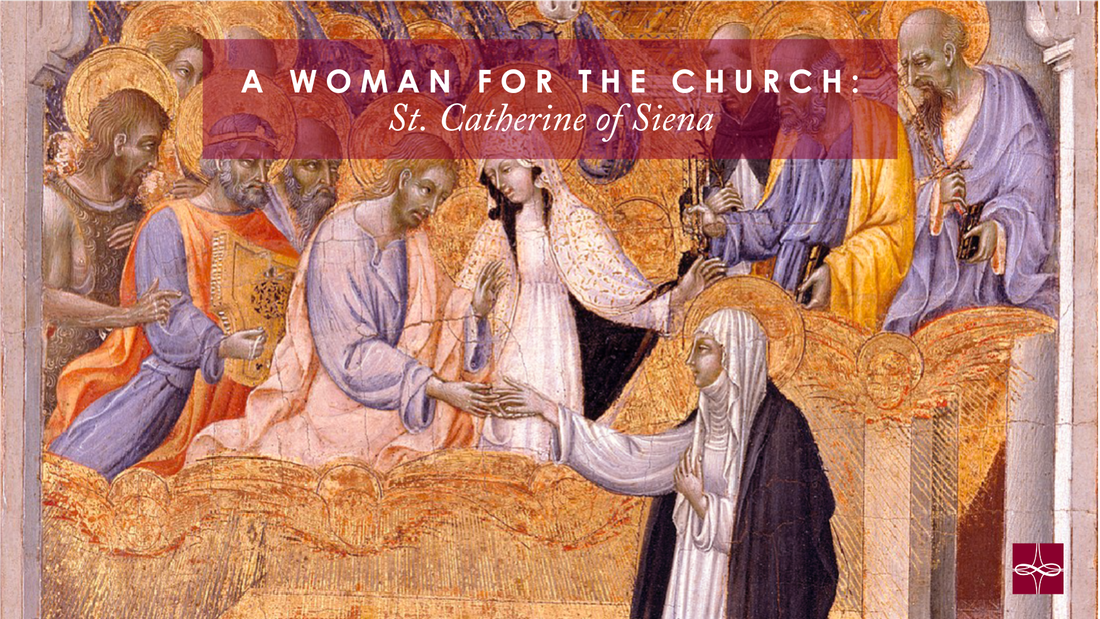

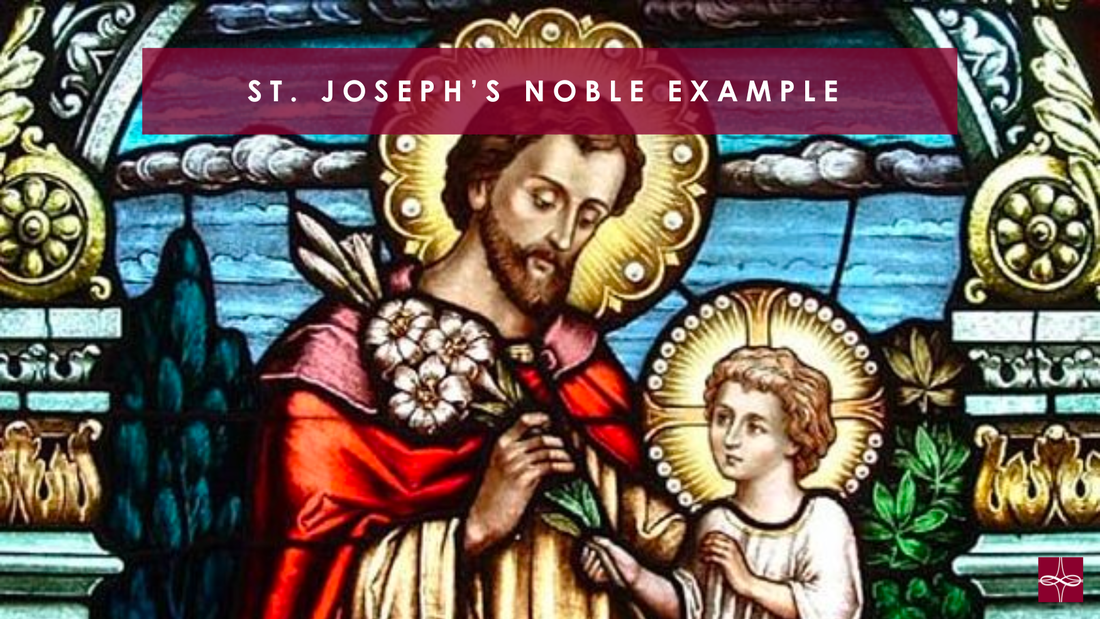

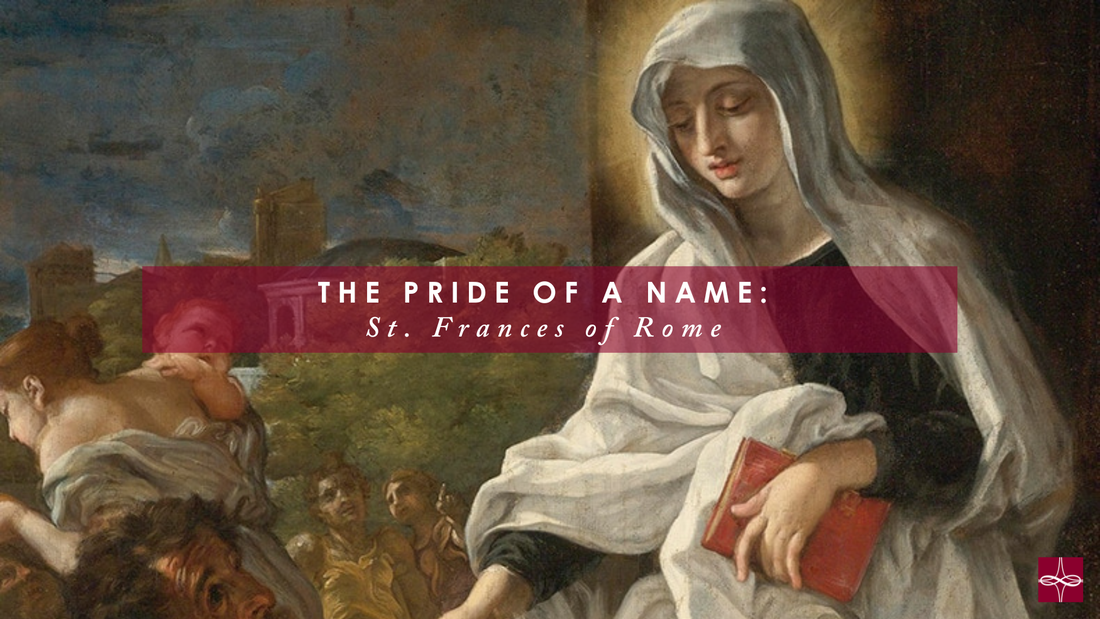

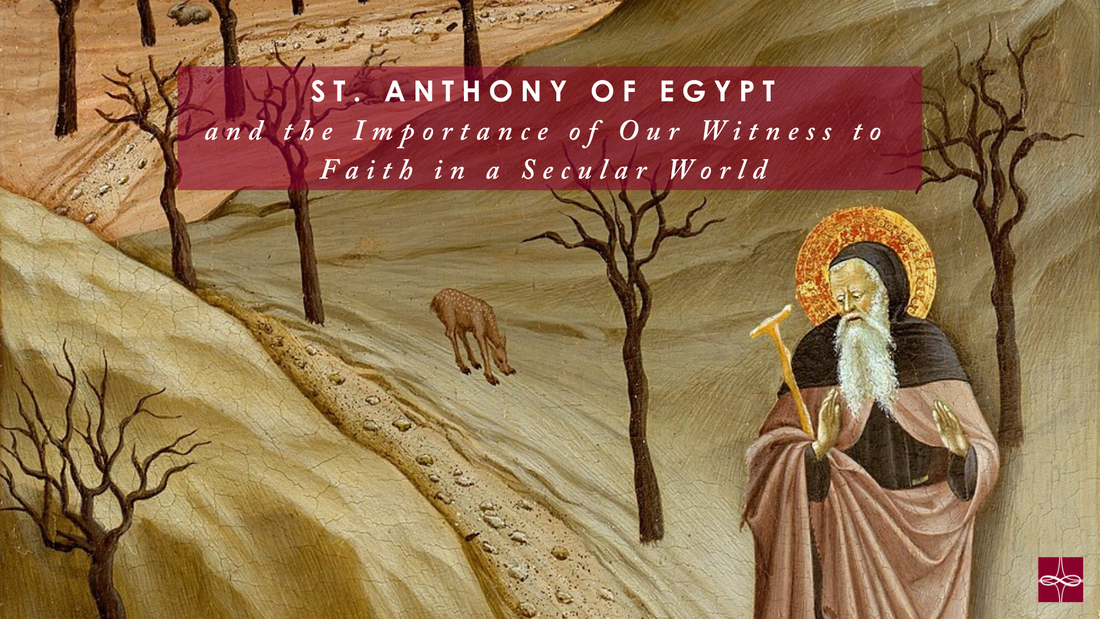



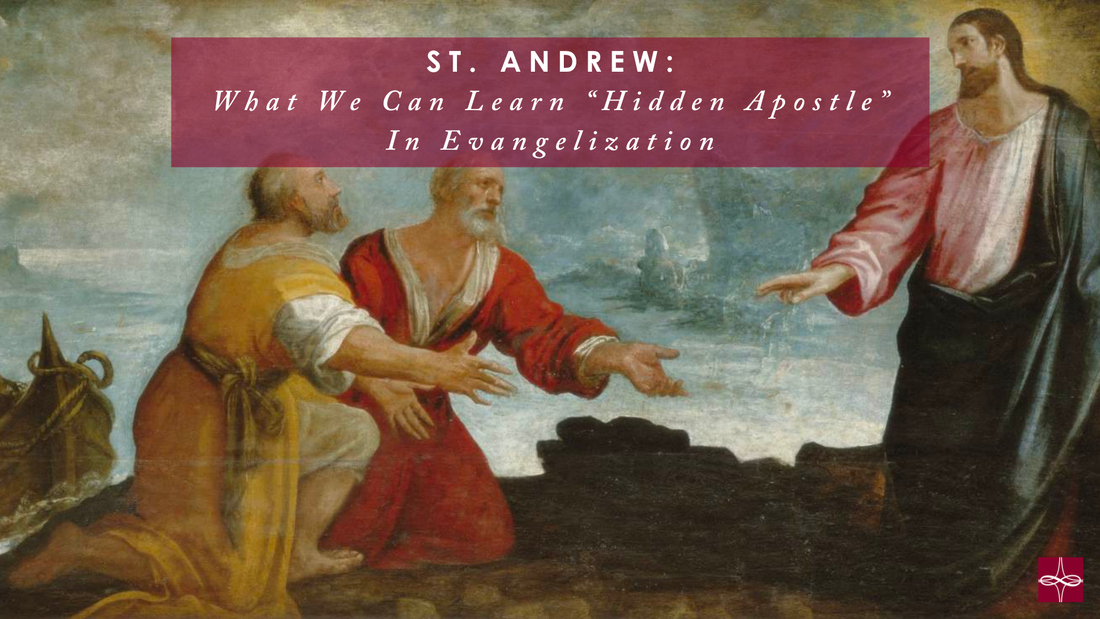
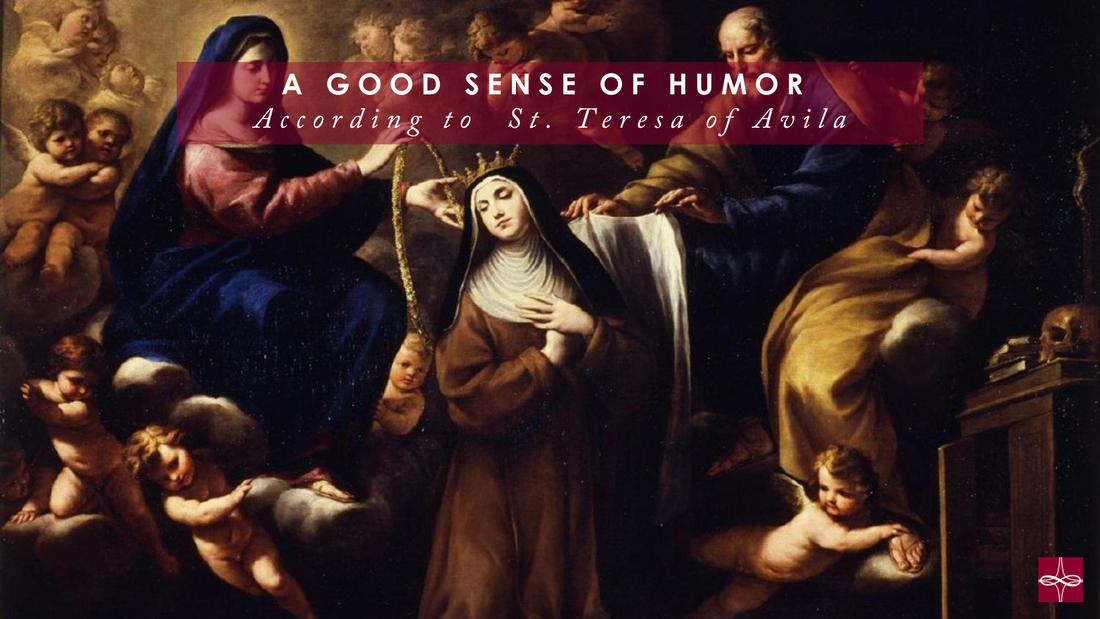


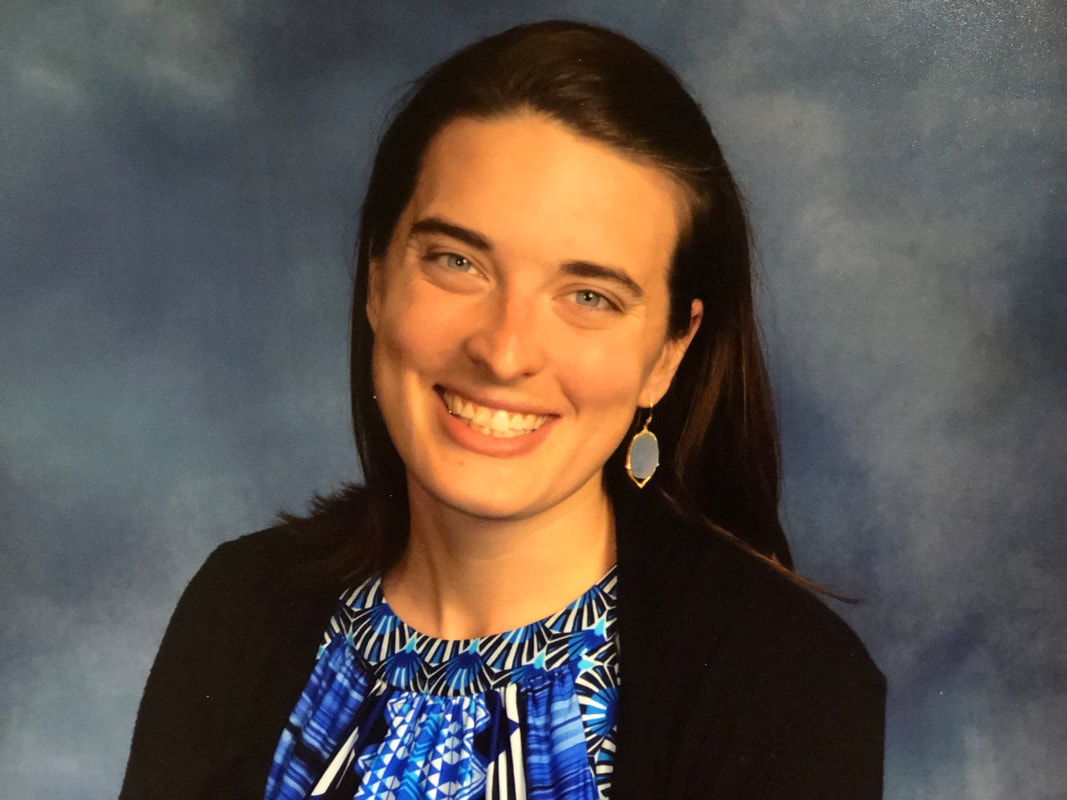
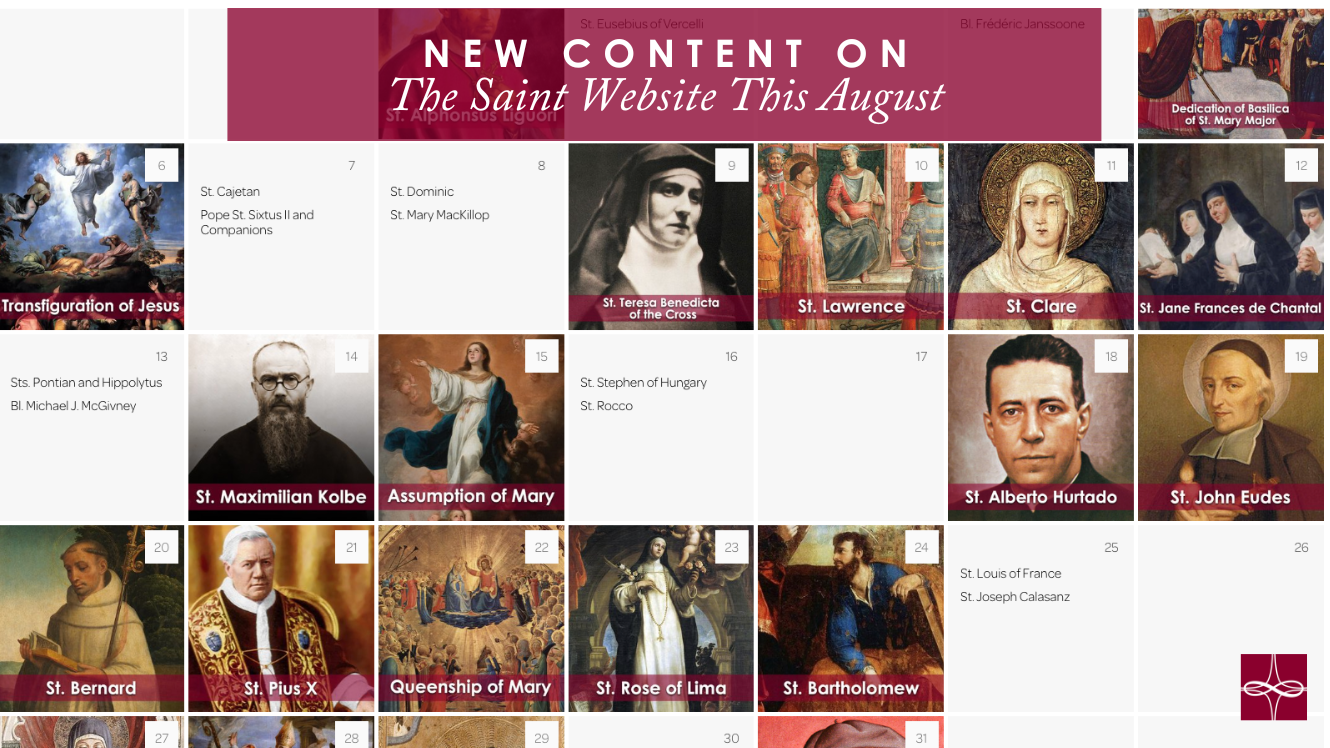

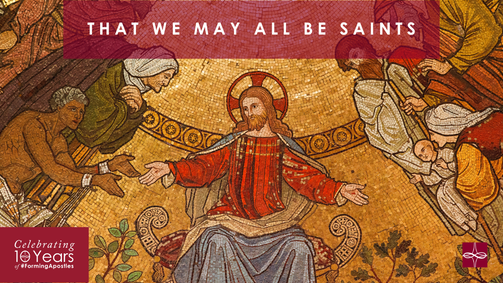
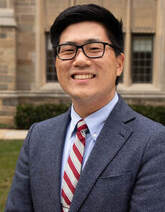
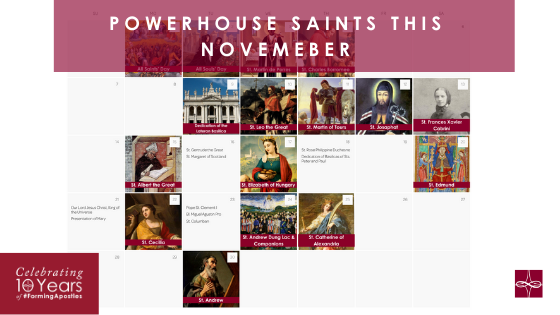

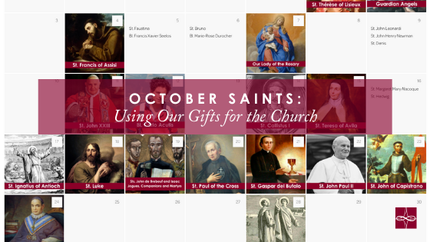



 RSS Feed
RSS Feed